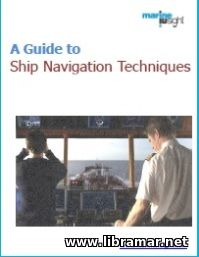 An excellent and useful title with the content worked out by the recognized marine expert to provide readers with the necessary practical guidance to the established modern navigation techniques. The sections of the publication are dealing with navigation with wind and with current, utilization of the ship thrusters, stopping distance and tug assistance, plus berthing with anchors and without tugs.
The navigation and deck officers have to be very careful when steering a ship from her course regardless of where the vessel is - at sea, crossing a channel, entering a port of leaving it. The bridge team shall be efficient and capable to sail the vessel in all weather and water conditions. The wind is one of the most important natural factors and it shall be taken into account by every ship navigator. Such ships as containerships usually have large freeboard resulting in a larger windage area, which makes them more affected by wind.
The navigator shall always remember to steer the vessel considering the major wind effects in order to perform the steering in a safe and easy manner. This book starts with detailed descriptions of the techniques that every navigator shall be familiar with to be able to control the vessel under different wind effects...
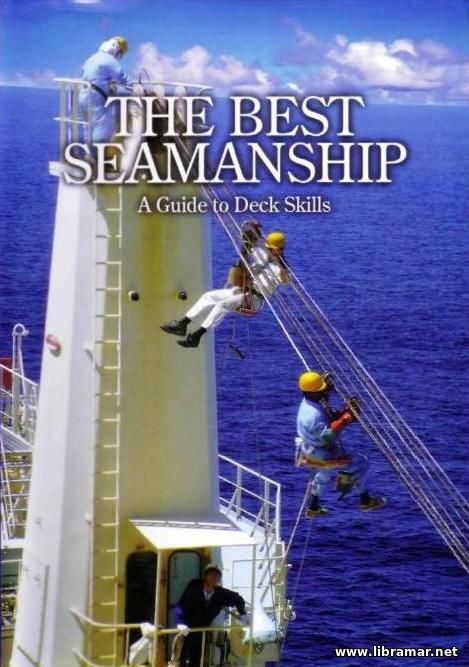 The publication provides seafarers and all other interested readers with a necessary practical guidance to the deck skills. The book starts with the chapter dedicated to the handling of ropes covering fiber rope and wire rope, tie of rope, splices for the three- and eight-strand and double braided rope, and of wires. The second chapter addresses the canvas works including tools, measuring and cutting, and sewing.
Third chapter of the Guide is dealing with the chipping and painting, including all associated safety equipment. Fourth chapter of the book provides the information on mooring and unmooring, covering the mooring line, anchor work, mooring to conventional buoy and to SBM, accommodation ladders and greasing the deck machinery. The fifth chapter titled Working Aloft covers the safety measures and boatswain's chair plus stage board.
Remaining three chapters of the Guide are dealing with the pilot ladder, including required arrangements for the pilot, emergent repair of these ladders, and making a ladder, repair works including ballast and cargo valves, emergency repairs to piping arrangements, air motors and facet plus door locks, and tools commonly used on deck - i.e. everything the crew members working on deck shall be aware of.
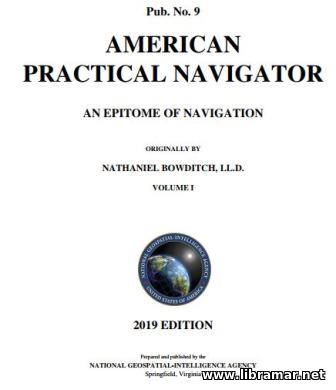 The latest edition of one of the most popular and demanded navigational publications in the world, deservedly considered a quintessential one for any navigator. The book is excellent when used for learning and for reviewing the theory. The set contains both first and second volumes of the book. The content is full of details and is perfectly informative.
An easy to read book covering absolutely everything navigators need to know. he coverage of the maritime terminology is truly impressive. The original edition of the Navigator was released more than a century ago, in 1802, and for all this time the publication has been treated a Bible of navigation. The text of the Navigator has significantly evolved since then to reflect the latest advances in navigation techniques and practices and continues to be the invaluable reference source for modern marine navigation.
The factors and principles of marine navigation are described in details, including traditional celestial navigation and modern electronic navigation, plotting, inertial navigation, meteorology, RF navigation techniques, satellite navigation, polar and ice navigation and many other matters. There are numerous data tables provided with the information required for the navigational calculations. In short, this is a must have book for any navigator.
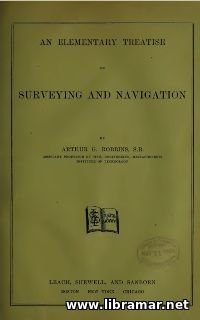 This quite brief but yet very interesting classic book on ship surveying and navigation was released more than a century ago with the intention of the author to provide students desiring to supplement their study of trigonometry with the reader-friendly course covering its application. The author did not try to cover all of the subjects fully. He rather made an excellent attempt to have his work as accurate as correct as possible.
We hope that the students who afterwards become a ship navigator or starts performing ship surveys will benefit from the content of this volume. Starting with the land surveys, i.e. measurement of lines, angles, areas and placing obstacles, the author then describes the working principle of compass, calculation of the areas and plotting. The transit is covered in a separate chapter including the plain and the engineer's transit, verniers angle measurements etc.
The part of the book devoted to ship navigation is dealing with the variation and deviation, log and knot. middle latitude sailing and in general provides all required information that the students as future navigators shall be aware of before they start sailing. Some supplementary information is also provides, such as the refraction tables used with the solar compass, and other.
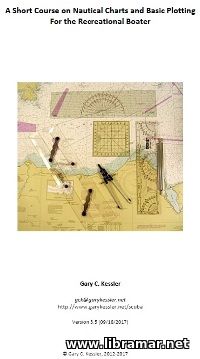 The present manual is mainly intended for the recreational boaters willing to get better understanding of the major elements of the nautical charts that are usually employed by the navigators in order to learn how to properly navigate through new bodies of water and how to perform the fundamental plotting tasks. The author of the publication is a recreational boater. The content of the manual has been arranged in two sections.
The first section is describing the nautical charts looking from the recreational mariner's point of view. In this part the author has described where the navigators shall acquire nautical charts and, what is even more important, where they can obtain necessary reference materials for proper interpretation of the markings. While this part is mainly focusing on the American nautical charts, some general information provided will apply to all nautical charts.
The second part of the boo is describing basic plotting, starting by the explanation of the fundamental definitions and introducing the basic concepts of deviation and variance, followed with a description of the tools required to plot courses. Also note that the manual focuses on printed charts and hand tools and shall be used as a tutorial for the people willing to understand the basic processes behind what is told to us by the modern automated and PC-based instruments.
 An excellent and successful attempt was made by the author of this rare and classic title to cover a very broad field than covered by any other existing work on seamanship. The other treaties on seamanship written in the days when this discipline was mainly concerned with handling and fitting sailing vessels. Subject treaties will remain valuable and will never get out of date. However, one cannot deny that the steam vessels have established their claim to consider in seamanship.
The present work provides readers with huge amount of information arranged in twenty-five big chapters covering literally all important aspects of the seamanship, starting from the hull and fittings of a vessel, splicing and knotting, various mechanical appliances on board ships, handling heavy weights, tackles and blocks, compass and submarine signals, through boats, ground tackle, handling vessels in a surf, the rules of the road. steering of steam ships, anchoring, piloting and maneuvering to avoid collisions, dry-docking of ships, handling steam ships, weather and handling of torpedo ships, to towing, stranding, man overboard, rescuing the crew members of a shipwreck, and specific hints for the junior ship officers. Numerous appendices have also been provided giving some additional valuable information.
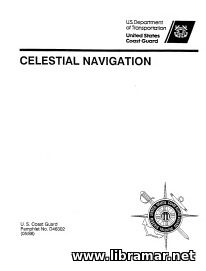 The original intention of the compilers of the present pamphlet was to provide readers with the enough practical knowledge they would require to observe and plot the celestial position lines in a correct ways, and also to be able to obtain any technical information commonly needed for completion of the celestial navigation day. In fact, the degree of proficiency that can be reached in the field of celestial navigation, depends on the practical experience of the mariners.
However, the present volume provides readers with lots of useful information that can be related as a foundation on which the whole other knowledge shall be built, and using this information, the mariners will be able to make the celestial navigation a much more satisfying experience. Please note that the information n an data provided in this title shall be used for training purposes only. For many centuries, the mariners used the small and big dippers as a sort of guides as they always stayed in a same position.
The star that did never seem to move at the sky was noticed to have a constant attitude and the mariners of the past used this to move north and south. We would not consider celestial navigation a dead art at all, even in the age of modern equipment and electronics. It is actually used to update the systems of electronic navigation and also used when there are ni any other means readily available...
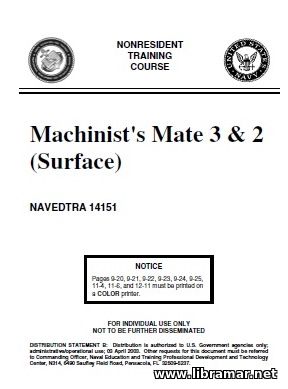 Originally, the present training course was published nearly twenty years ago with the main declared intention of its authors to develop a good training resource to be practically helpful for the sailors and would significantly improve their professional and military technical knowledge; subject course was supposed to be used when preparing to sit for the Navywide examinations.
The content includes various information covering the everyday occupational knowledge and the skill requirements, the text and informative data tables supplemented with the numerous illustrations included to assist trainees with getting better understand all provided information. There is another important and practical feature of this title, i.e. the references to the useful relevant info and data that may be found in other books.
The materials in the volume have been arranged in the eighteen chapters that provide the general information, describing the steam turbines, reduction gear together with the associated equipment, pumping arrangements, lubrication and air ejectors, heat exchangers, various engineering operations and their administration, refrigeration, piping and systems, air conditioning, compressed air systems, steam operated plants, auxiliary equipment, auto-boiler controls, propulsion boilers, their fittings and tools, etc. The glossary of terminology has also been provided.
« 1 2 ... 9 10 11 12 13 14 » |







